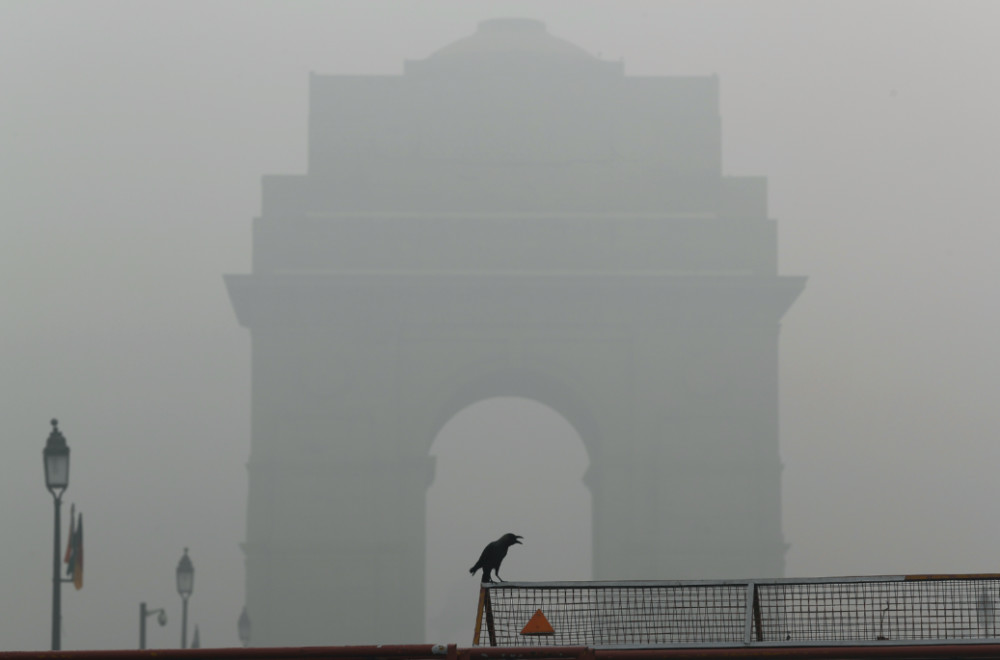Rome, Italy
Thomson Reuters Foundation
Lockdowns during the first wave of COVID-19 had a much smaller impact on urban air quality than first expected, a study of 11 global cities, from Wuhan to New York, found on Wednesday.
As millions stayed home, concentrations in the air of nitrogen dioxide (NO2) – a key pollutant emitted by traffic, linked to respiratory infections and cancer – fell by between 10 per cent and 50 per cent, said the paper in the journal Science Advances.

A crow sits on a barricade in front of India Gate amidst smog in New Delhi, on 3rd November, 2019. PICTUR: Reuters/Adnan Abidi/File photo.
But at the same time, concentrations of ozone (O3) – which can cause chest pain, harm lung tissue and worsen asthma – increased by two per cent to 30 per cent in different cities, scientists found after accouting for the impact of weather and seasonal trends.
Road traffic emissions normally remove ozone from the air but with fewer vehicles on the road, there were less emissions and less ozone reduction, lead author Zongbo Shi of Britain’s University of Birmingham told the Thomson Reuters Foundation.
“We found increases in ozone levels due to lockdown in all the cities studied,” William Bloss, Professor of Atmospheric Sciences at the University of Birmingham, said in a statement.
“This is what we expect from the air chemistry, but this will counteract at least some of the health benefit from NO2 reductions.”
Air pollution is the single largest environmental risk to human health globally, and kills an estimated seven million people every year, according to the World Health Organization.
The researchers studied pollution levels in 11 cities that had extensive lockdowns – Beijing, Wuhan, Milan, Rome, Madrid, London, Paris, Berlin, New York, Los Angeles and New Delhi.
Previous studies found much more dramatic falls in NO2, including a paper by the Chinese Academy of Science which said Wuhan, where COVID-19 was first identified, saw a 93 per cent drop in NO2 at the height of the coronavirus outbreak.
The Birmingham scientists said it was important not to simply compare air quality before and after restrictions began or levels in the same periods in previous years.
Instead, they used machine learning to strip out the impact of weather on air quality before analysing data from 2015 to May, 2020, and took into account how cities with clean air policy actions would see emission reductions over time.
The third pollutant studied was PM2.5, or particulate matter like soot and smoke, which is emitted by cars and industry and can lodge in the lungs and enter the bloodstream, causing fatal lung and heart diseases.
Concentrations of PM2.5 decreased in all cities except London and Paris but the declines were nowhere near enough to meet WHO guidelines, the paper said.





